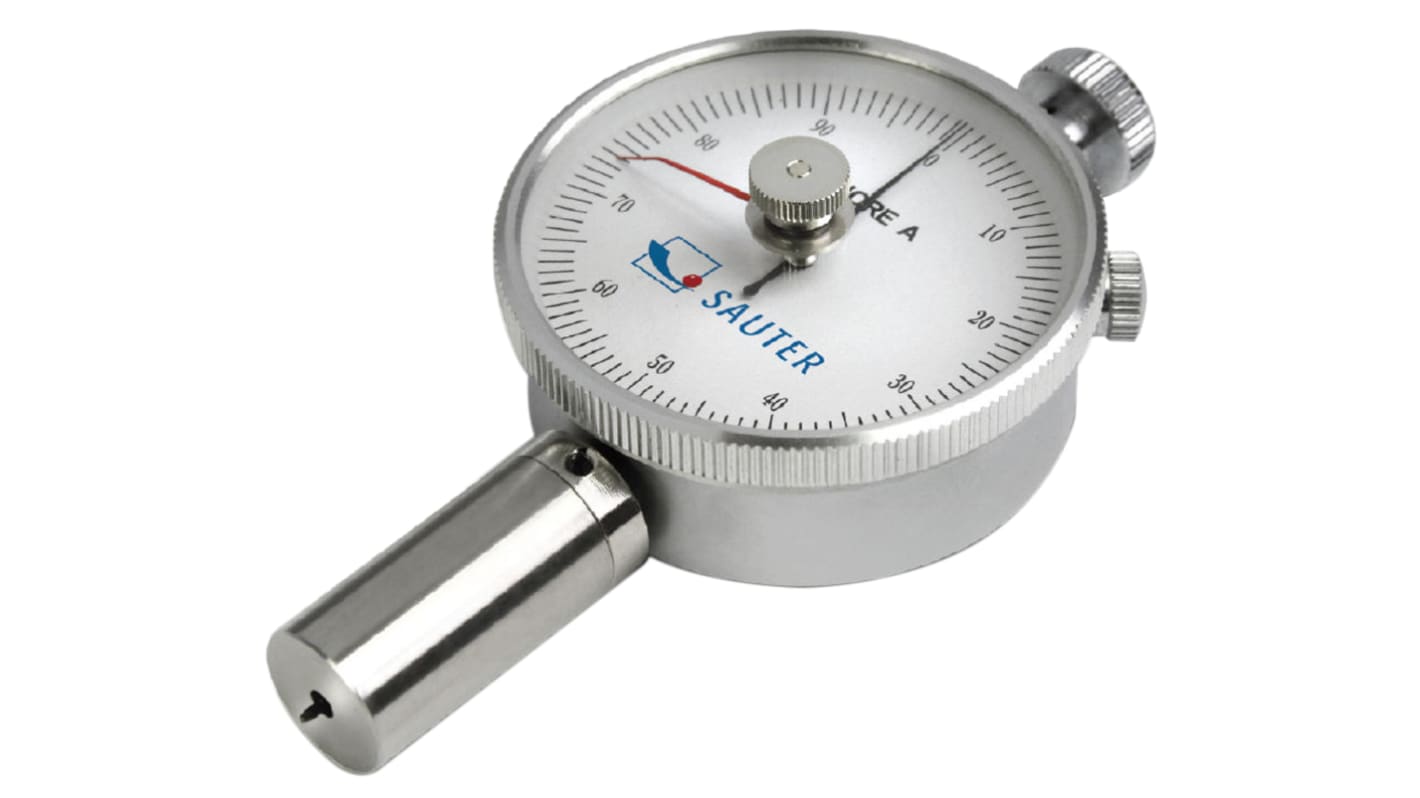Sauter HB0 100-0HB0 100-0. Durometer
- RS Stock No.:
- 136-3545
- Mfr. Part No.:
- HB0 100-0
- Brand:
- Sauter

Subtotal (1 unit)*
£164.80
(exc. VAT)
£197.76
(inc. VAT)
FREE delivery for orders over £50.00
In Stock
- 7 unit(s) ready to ship
- Plus 2 unit(s) ready to ship from another location
Need more? Click ‘Check delivery dates’ to find extra stock and lead times.
Units | Per unit |
|---|---|
| 1 + | £164.80 |
*price indicative
- RS Stock No.:
- 136-3545
- Mfr. Part No.:
- HB0 100-0
- Brand:
- Sauter
Specifications
Technical Reference
Legislation and Compliance
Product Details
Find similar products by selecting one or more attributes.
Select all | Attribute | Value |
|---|---|---|
| Brand | Sauter | |
| Tester Type | Durometer | |
| Shore Scale | Shore A0 | |
| Indenter | Ball Head | |
| Graduation | 1 | |
| Weight | 160g | |
| Dimensions L x W x D | 115 x 60 x 25mm | |
| Select all | ||
|---|---|---|
Brand Sauter | ||
Tester Type Durometer | ||
Shore Scale Shore A0 | ||
Indenter Ball Head | ||
Graduation 1 | ||
Weight 160g | ||
Dimensions L x W x D 115 x 60 x 25mm | ||
- COO (Country of Origin):
- CN
Kern Analogue Shore Hardness Tester
A compact hand held durometer with drag indicator. Ideal for internal comparison measurement. Supplied in a wooden carrying case for safe and secure storage.
Typical Application
• Measurement of penetration (Shore)
Feature and Benefits
• Mechanical shore hardness meter
• For internal comparison measurement. Standard calibrations e.g. to DIN 53505 are often not possible because of narrow standard tolerances
• Shore A: Rubber, elastomers, neoprene, silicone, vinyl, soft plastics, felt, leather and similar material
• Shore D: Plastics, Formica, epoxies, plexi glass etc.
• Shore A0: Foam, sponge etc.
• Max Mode: Holds the maximum value in the display
• Point Mode: Shows one instant value
• Can be attached to test stands SAUTER TI-A0 (for Shore A and A0), TI-D. (for Shore D)
• Tester Shore A0
Parallels, Surface Finish & Hardness
Surface Finish
Any machined component has a surface geometry which consists of three basic elements:
Form or Curvature - Whether the surface has irregular bumps or dimensional changes
Waviness - Whether the surface has regular repetitive ripples or patterns (e.g. milling patterns)
Roughness - The shapes or irregularities that are smaller than, and form part of the waviness pattern (e.g. material micro-structure)
Waviness - Whether the surface has regular repetitive ripples or patterns (e.g. milling patterns)
Roughness - The shapes or irregularities that are smaller than, and form part of the waviness pattern (e.g. material micro-structure)
Waviness and roughness are traditionally the most difficult elements to measure when comparing surface finish, however, they have a radical effect on the performance of the finished component. Variations will cause aesthetic appearance changes, component wear variations, oil retention variation etc. Many manufacturers therefore specify a range of roughness values which their components should be manufactured to, often expressed as: Ra, Rq (RMS), RzDIN, Ry, Sm,mm.
